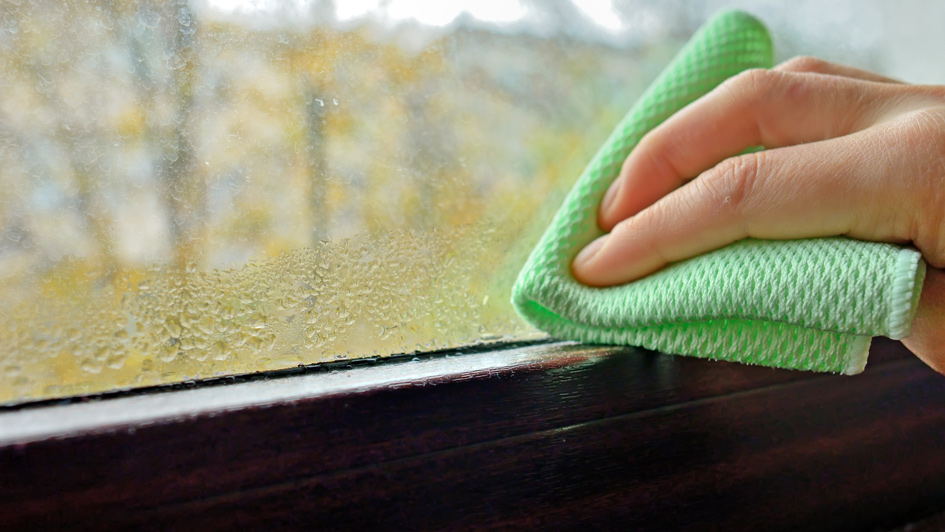
The windows of your home are a gateway to the outdoors, a way to let light in as you appreciate the view of your garden, yard or landscape. The last thing you would want to see is a sweaty window plastered in a film of condensation.
Not only are windows plastered with condensation unattractive, they also can be a sign of a more substantial air-quality deficit within your home. Thankfully, there’s numerous things you can attempt to address the problem.
What Causes Sweating in Windows
Condensation on the interior of windows is created by the damp warm air in your home reaching the colder surface of your windows. It’s particularly common over the winter when it’s much colder outside than it is within your home.
Inside Moisture vs. In Between Panes
When talking about condensation, it’s necessary to know the distinction between moisture on the inside of your windows compared to moisture in between the windowpanes. One is an indoor air quality issue and the other is a window issue.
- Moisture on the inside of a window is created from the warm damp air throughout your home collecting against the glass.
- Any moisture you find between windowpanes is formed when the window seal breaks down and moisture gets in between the two panes of glass, and by then the window has to be repaired or replaced.
- Condensation inside the windows isn’t a window problem and can instead be resolved by fine-tuning the humidity in your home. Many things generate humidity in a home, including showers, cooking, laundry or even breathing.
Why Condensation on Windows Can Be an Issue
Although you might consider condensation on the inside of your windows is a cosmetic concern, it could also be indicating your home has higher humidity. If that’s the case, water could also be condensing on window frames, cold walls or other surfaces. Even a slim film of water can encourage wood surfaces to mildew or rot over time, promoting the growth of mildew or mold.
How to Reduce Humidity Inside Your Home
Thankfully there are several options for eliminating moisture from the air in your home.
If you have a humidifier running within your home – whether it be a small-scale unit or a whole-house humidifier – lower it further so the humidity inside your home decreases.
If you don’t have a humidifier going and your home’s humidity level is high, think about installing a dehumidifier. While humidifiers put moisture into your home so the air doesn’t dry out, a dehumidifier pulls excess moisture out of the air.
Smaller, portable dehumidifiers can eliminate the water from a single room. However, portable units require emptying water trays and generally service a somewhat limited area. A whole-house dehumidifier will remove moisture from your entire home.
Whole-house dehumidifier systems are managed by a humidistat, which permits you to specify a humidity level precisely like you would choose a temperature with your thermostat. The unit will run automatically when the humidity level surpasses the set level. These systems collaborate with your home’s HVAC system, so you will want to contact experienced professionals for whole-house dehumidifier installation Georgetown.
Additional Ways to Decrease Condensation on Windows
- Exhaust fans. Installing exhaust fans near humidity hotspots such as the bathroom, laundry room or above the stove can help by drawing the warm, moist air from these rooms out of your home before it can elevate the humidity level inside your home.
- Ceiling fans. Turning on ceiling fans can also keep air flowing throughout the home so humid air doesn’t get trapped in one area.
- Open window treatments. Pulling open the blinds or drapes can decrease condensation by stopping the damp air from being stuck against the windowpane.
By lowering humidity in your home and moving air throughout your home, you can enjoy clear, moisture-free windows even in the winter.

